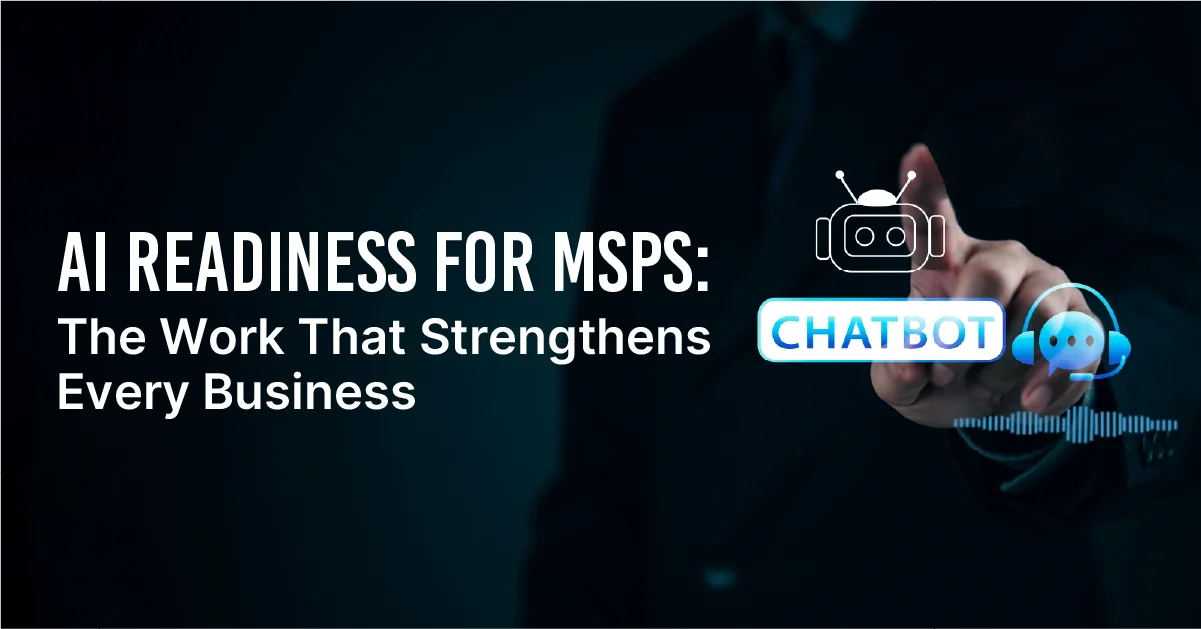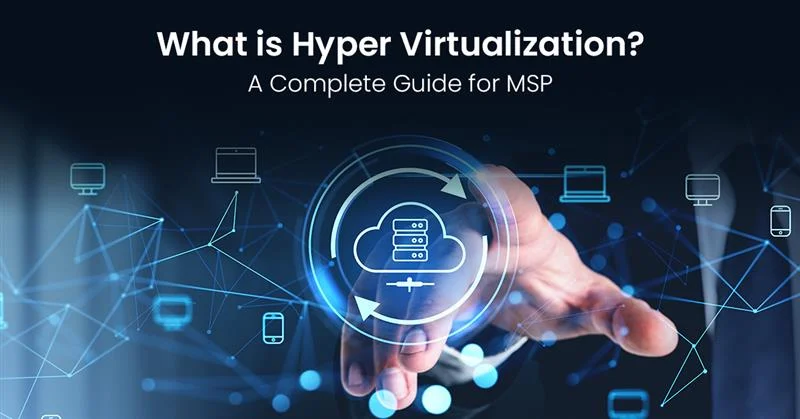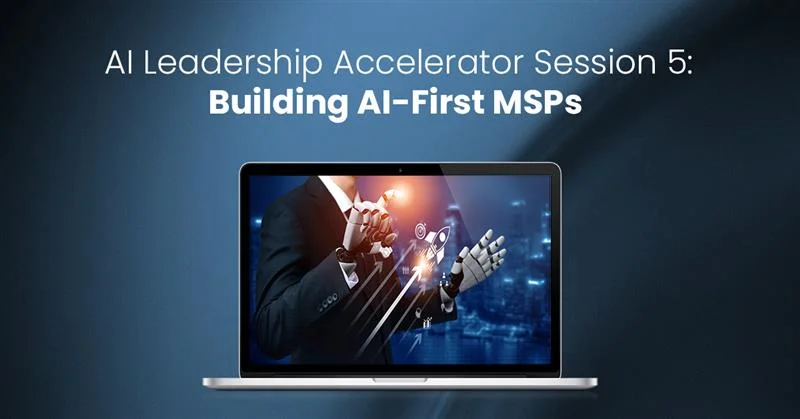Self-managed vs. co-managed staffing models are killing MSP growth potential. Every month, we see profitable MSPs struggle with the same choice: build an expensive internal team or partner with external providers for flexibility and expertise.
The brutal reality? Most MSPs choose based on gut feeling rather than data. They hire self-managed engineers because it feels “safe,” then watch competitors win enterprise deals using co-managed teams with specialized skills they can’t afford internally.
Here’s what matters: understanding when each model makes financial sense, how to implement them effectively, and why the smartest MSPs like IT By Design, an MSP staffing solution provider, use both strategically. Let’s break down the self-managed vs. co-managed decision that could double your revenue or drain your cash flow.
Understanding Co-Managed Engineers and Third-Party Provider Benefits
Co-managed engineering flips the script entirely. Instead of owning everything internally, you partner with a third-party provider to share responsibility and leverage external expertise. This shared responsibility model offers unique advantages for MSPs focused on growth and specialization.
Co-Managed Model Definition and Shared Responsibility Framework
Co-managed engineers operate through partnerships between your MSP and an external IT service provider. This shared responsibility framework allows your internal team to focus on core competencies while the third-party provider handles specialized functions, overflow capacity, or round-the-clock coverage.
The collaboration element becomes crucial here. Your internal team maintains client relationships and handles primary responsibilities, while co-managed engineers from the third-party provider augment capabilities during peak periods or provide specialized expertise your team lacks.
This model transforms your helpdesk vs. service desk operations by extending capabilities without internal hiring commitments. Your service desk can seamlessly escalate complex issues to specialized co-managed engineers who bring deep expertise in specific technologies or industries.
Third-Party Provider Integration and Collaboration Benefits
Working with an external IT service provider through co-managed engineers offers immediate access to specialized skills without long-term commitments. Need Azure expertise for a major migration? Kubernetes specialists for container deployments? Cybersecurity analysts for compliance requirements? Co-managed engineers provide on-demand access to these capabilities.
The scalability advantages become obvious during rapid growth phases. While hiring and training self-managed engineers takes months, co-managed engineers can augment your team within days or weeks. This backend support flexibility allows your MSP to accept larger projects and serve more demanding clients without operational risk.
Risk mitigation represents another key benefit. When you rely entirely on self-managed engineers, illness, vacation, or turnover can cripple operations. Co-managed engineers provide built-in redundancy through the third-party provider’s broader resource pool.
Real-World Success: A growing MSP landed a Fortune 500 client requiring specialized Azure expertise but couldn’t justify hiring full-time cloud architects. Through co-managed engineers, they accessed senior Azure specialists for the project duration, delivered exceptional results, and maintained the client relationship long-term while avoiding permanent staffing costs.
What is Self-Managed Engineering for MSP Operations?
Self-managed engineering represents the traditional approach where your MSP maintains complete direct control over your technical workforce. Think of it as keeping the entire engine in-house; you own every component, manage every process, and shoulder every responsibility.
Self-Managed Engineers Definition and Direct Control Benefits
Self-managed engineers work directly for your MSP with full oversight from your internal management team. You handle recruitment, training, performance management, and career development entirely within your organization. This direct control approach offers several compelling advantages for MSPs seeking predictable operations.
Your self-managed engineers integrate seamlessly with your existing helpdesk vs. service desk operations because they understand your processes, know your clients, and follow your established protocols. There’s no external coordination required decisions happen fast, changes implement immediately, and accountability remains crystal clear.
The direct control model also provides cultural consistency. Your self-managed engineers absorb your company values, understand your service philosophy, and represent your brand authentically during client interactions.
Core Characteristics of Self-Managed vs. Co-Managed Models
Self-managed vs.co-managed models differ fundamentally in responsibility allocation. With self-managed engineers, your MSP assumes full responsibility for talent acquisition, retention, and performance outcomes. This includes managing the complete employee lifecycle from hiring through retirement.
Cost-plus pricing becomes more predictable with self-managed engineers because you control all variables; salaries, benefits, training costs, and overhead expenses. However, this predictability comes with the responsibility of managing these costs effectively during both growth and contraction periods.
Scalability challenges emerge when your MSP needs rapid expansion. Engineering management roles command average salaries of $196,000 according to recent industry data, making quick scaling expensive and risky.
Real-World Challenge: A mid-sized MSP with 15 self-managed engineers faced a crisis during tax season when their accounting firm client needed 24/7 support. Their self-managed engineers demanded overtime premiums, creating budget strain and service delivery gaps. The solution involved implementing tiered escalation procedures where self-managed engineers handled standard hours while establishing clear emergency response protocols with cost containment measures.
Self-Managed vs. Co-Managed: Critical Differences for MSP Growth
Understanding the strategic differences between self-managed vs.co-managed models directly impacts your MSP’s growth trajectory, operational efficiency, and competitive positioning.
Direct Control vs. Collaboration: Impact on MSP Operations
Self-managed engineers provide absolute direct control over every aspect of service delivery. You set priorities, establish processes, and manage performance without external dependencies. This control enables rapid decision-making and ensures consistent service quality aligned with your MSP’s standards.
However, co-managed engineers require collaboration skills and shared responsibility management. You must coordinate with your third-party provider, align on service standards, and manage handoffs between internal and external teams. This collaboration complexity can slow decision-making but provides access to broader capabilities.
The integration with helpdesk vs. service desk operations differs significantly. Self-managed engineers work within your existing workflows seamlessly, while co-managed engineers require unified ticketing systems and clear escalation procedures to maintain service quality.
Cost-Plus Pricing Models: Self-Managed vs. Co-Managed Economics
Self-managed engineers create predictable cost-plus pricing structures. You know exactly what each engineer costs annually; salary, benefits, training, equipment, and overhead. This predictability helps with client pricing and profit margin calculations.
With IT staff turnover rates hovering at 13% according to industry research, self-managed engineers also carry hidden costs; recruitment fees averaging $15,000-$25,000 per hire, training investments, and productivity losses during transitions.
Co-managed engineers operate on variable cost-plus pricing through your third-party provider. You pay for services consumed rather than full-time employees, providing flexibility during slow periods but potentially higher per-hour costs during peak demand.
The economic analysis becomes complex when considering specialization. That Azure expert might cost $200,000+ annually as a self-managed engineer but only $150 per hour through co-managed services—making the co-managed approach cost-effective unless you need full-time Azure support.
Scalability and Backend Support: Growth Readiness Assessment
Scalability represents the most significant difference between self-managed vs.co-managed models. Self-managed engineers scale linearly; each new engineer requires recruitment, onboarding, training and integration into your team. This process typically takes 90-120 days from job posting to full productivity.
Co-managed engineers through external IT service providers offer elastic scalability. Need additional support for a major project? Your third-party provider can assign qualified engineers within days. Project complete? Scale back without layoffs or unused capacity costs.
Backend support capabilities also differ dramatically. Self-managed engineers provide consistent, dedicated support but limited depth in specialized areas. Co-managed engineers access the full knowledge base and expertise of their parent organization, providing deeper backend support for complex technical challenges.
Real-World Example: A fast-growing MSP landed a 500-employee client requiring 24/7 support but only operated with 9-5 self-managed engineers. Rather than hiring expensive night shift staff, they implemented a hybrid model: self-managed engineers handled core hours for existing clients while co-managed engineers provided extended coverage through their third-party provider. This approach-maintained cost control while meeting demanding client requirements.
When Should MSPs Choose Between Self-Managed and Co-Managed Engineers?
The self-managed vs.co-managed decision depends on specific business conditions, client requirements, and growth objectives. Neither approach works universally success requires matching the model to your MSP’s current situation and future plans.
Self-Managed Engineers: Optimal Scenarios for Direct Control
Self-managed engineers excel when your MSP operates in high-security environments requiring complete direct control over personnel and processes. Government contracts, healthcare MSPs managing HIPAA compliance, and financial services providers often mandate self-managed teams due to regulatory requirements.
Stable client bases with predictable support needs favor self-managed engineers. When you can forecast workload accurately and clients value consistency over specialization, the self-managed model provides cost efficiency and service predictability.
Strong internal HR and management capabilities make self-managed engineers more viable. Your MSP needs recruitment expertise, performance management systems, and career development programs to succeed with internal staff.
Co-Managed Engineers: Strategic Third-Party Provider Benefits
Co-managed engineers shine during rapid growth phases requiring immediate scalability. When client acquisition outpaces your ability to hire and train self-managed engineers, third-party provider partnerships prevent service quality degradation.
Specialized skill requirements often favor co-managed approaches. Rather than hiring expensive specialists for occasional needs, co-managed engineers provide on-demand expertise through external IT service providers.
Cost optimization during uncertain economic periods benefits from co-managed flexibility. You can adjust capacity based on demand without the fixed costs associated with self-managed engineers.
Hybrid Approach: Combining Self-Managed and Co-Managed Models
Many successful MSPs discover that self-managed vs.co-managed isn’t an either-or decision. Hybrid approaches leverage both models strategically:
- Core functions with self-managed engineers for consistency and culture
- Specialized services through third-party provider collaboration for expertise
- Peak demand management using co-managed engineers for scalability
- Geographic expansion with backend support through shared responsibility models
This hybrid approach maximizes the benefits of both models while minimizing their respective limitations.
Integration Strategies: Helpdesk vs. Service Desk Optimization
Successful implementation of either self-managed vs.co-managed models requires careful integration with your existing support structure and clear understanding of helpdesk vs. service desk optimization.
Self-Managed Engineers and Internal Operations
Self-managed engineers integrate naturally with internal helpdesk operations because they share common processes, tools, and cultural understanding. Your helpdesk vs. service desk workflows remains unified under direct control, enabling consistent service delivery and quality management.
Training standardization becomes simpler with self-managed engineers because everyone follows the same procedures and uses identical tools. Knowledge management stays internal, reducing coordination complexity and potential service gaps.
Co-Managed Engineers and Service Desk Collaboration
Co-managed engineers require more sophisticated integration strategies. Your service desk must accommodate external team members who may use different tools, follow alternative procedures, or operate in different time zones.
Unified ticketing systems become essential for co-managed success. Both internal staff and third-party provider teams need access to the same information, escalation procedures, and client communication histories to maintain service quality.
Shared responsibility matrices help clarify roles and prevent service gaps. Clear documentation outlining which team handles specific issue types, escalation triggers, and communication protocols ensures smooth collaboration between self-managed and co-managed engineers.
Integration Success Story: One MSP resolved helpdesk vs. service desk confusion by implementing a unified platform where tickets automatically route based on complexity and expertise requirements. Simple issues go to self-managed engineers for rapid resolution, while specialized problems escalate to co-managed engineers with appropriate expertise. This system reduced resolution times by 35% while maintaining consistent client experiences.
Conclusion: Optimize Your MSP with Expert Solutions
The self-managed vs.co-managed decision shapes your MSP’s future growth, operational efficiency, and competitive positioning. Whether you choose direct control through self-managed engineers or scalability through co-managed partnerships, success requires strategic implementation and ongoing optimization.
However, implementing either approach effectively demands expertise in resource allocation, collaboration frameworks, and backend support optimization that many MSPs lack internally.
IT By Design’s MSP staffing solutions provide comprehensive guidance for both self-managed and co-managed engineering models. Their proven methodologies help MSPs optimize resource allocation, implement effective shared responsibility frameworks, and build scalable operations that drive sustainable growth.
Transform your engineering approach with strategic expertise.
Schedule a call with us today to explore battle-tested strategies for maximizing by industry leaders for both self-managed and co-managed engineer effectiveness through proven collaboration and scalability frameworks.
FAQs (Frequently Asked Questions)
Q: What’s the main difference between self-managed and co-managed engineers?
A: Self-managed engineers work directly for your MSP under your complete direct control, while co-managed engineers are provided through third-party provider partnerships with shared responsibility.
Q: Which model is more cost-effective for growing MSPs?
A: Co-managed engineers often provide better cost-plus pricing flexibility for rapid growth, while self-managed engineers offer long-term cost predictability and control.
Q: Can MSPs use both self-managed and co-managed engineers?
A: Yes, hybrid approaches are common—use self-managed engineers for core functions and co-managed engineers for specialized skills or scalability needs.
Q: How do co-managed engineers integrate with existing teams?
A: Through unified service desk platforms, shared responsibility frameworks, and clear collaboration protocols that ensure seamless backend support.
Q: What are the scalability differences between models?
A: Self-managed engineers require linear hiring and training, while co-managed engineers offer elastic scalability through external IT service provider resources.








